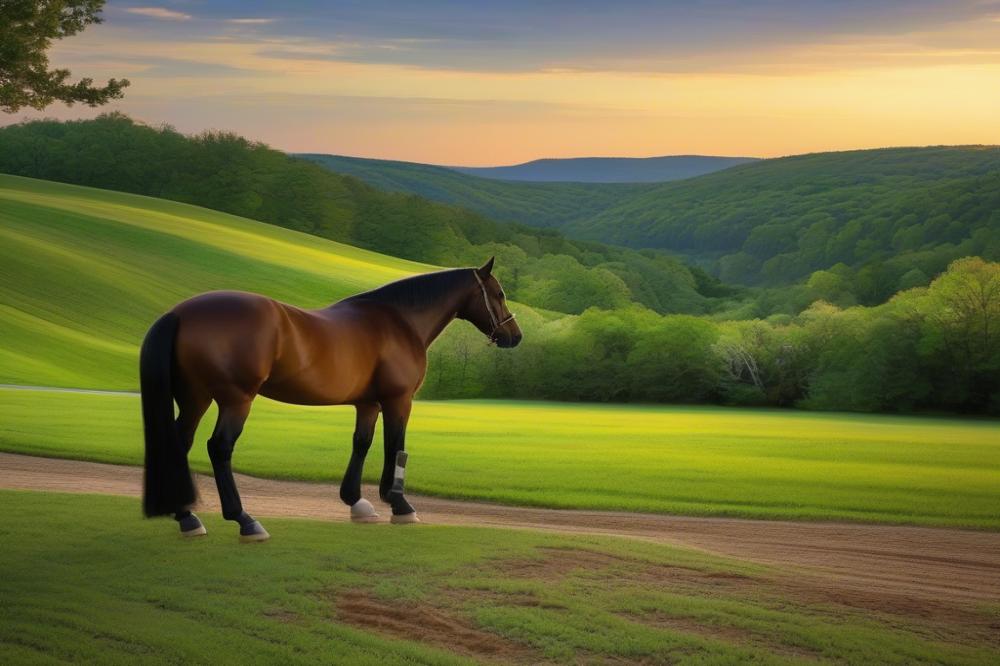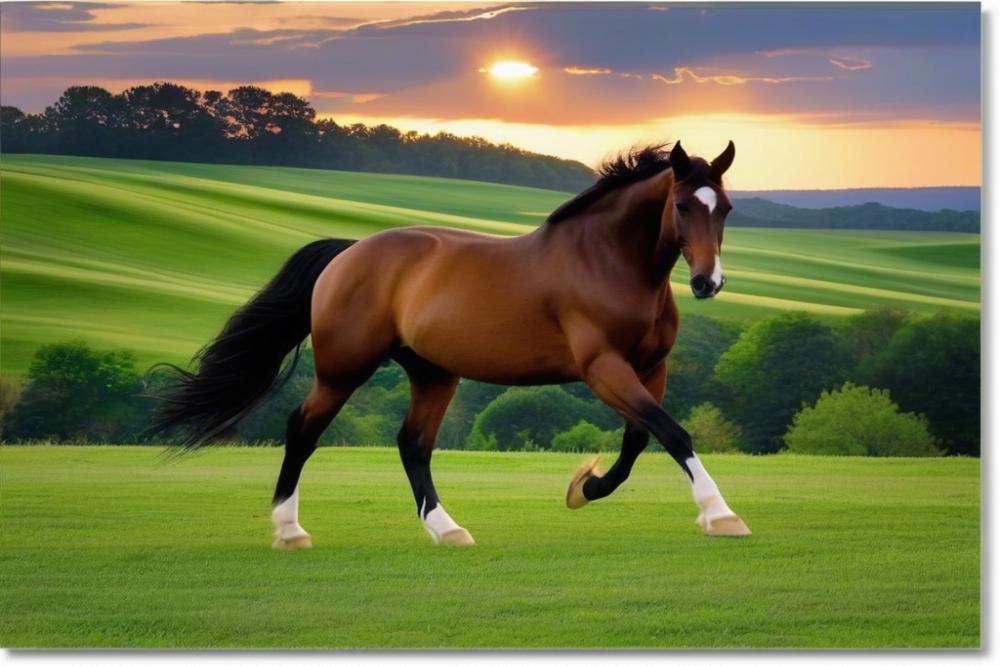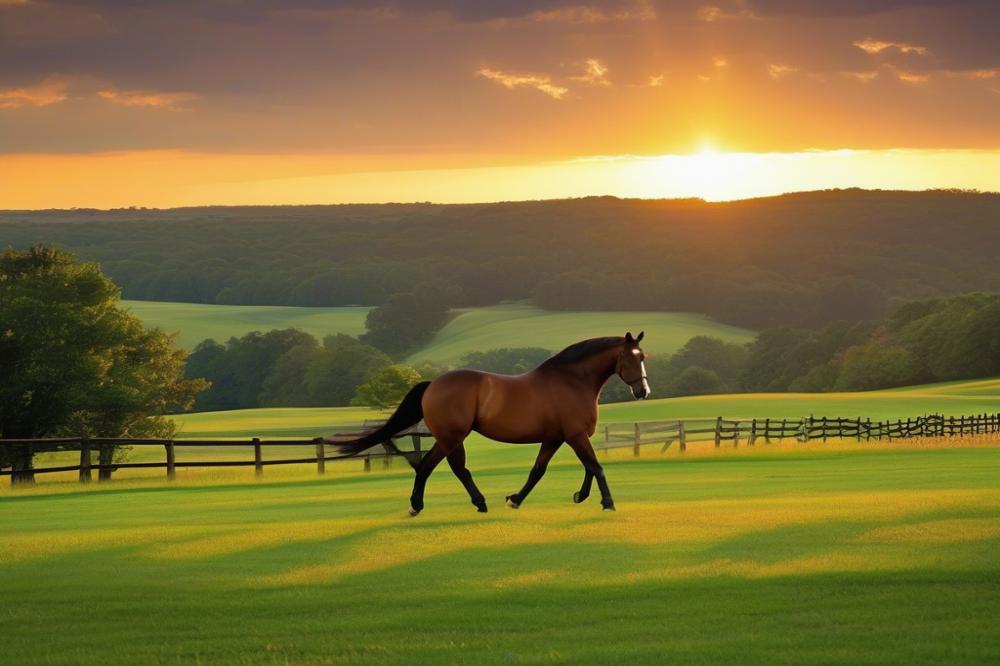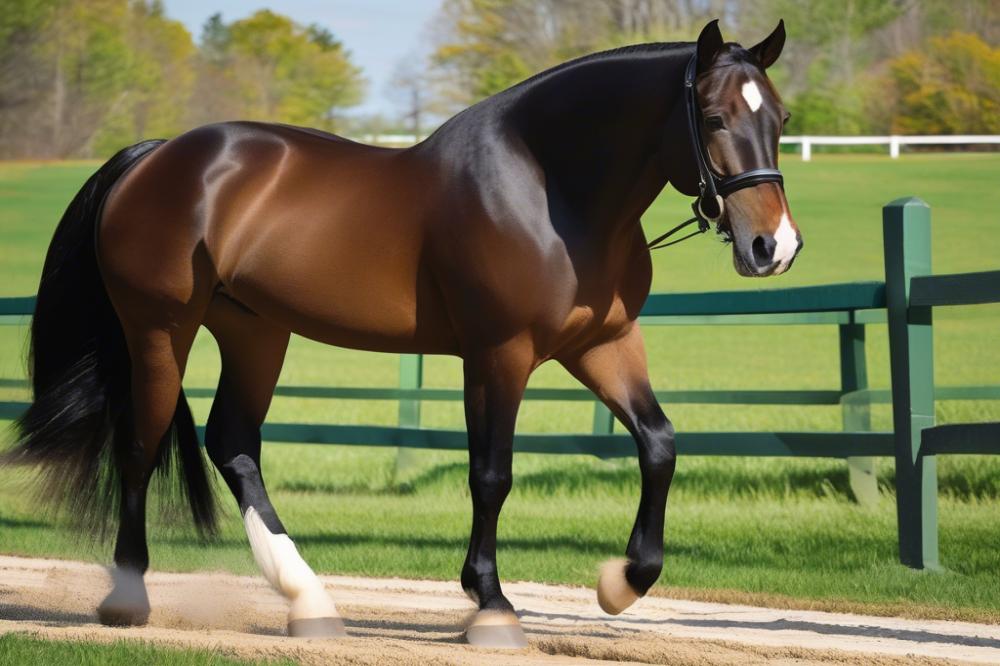Introduction
The Tennessee Walking Horse is a breed known for its smooth gait and friendly disposition. Riders and enthusiasts often admire these horses for their unique abilities and gentle nature. Originating in the southern United States, this horse became popular for its role in plantation work and leisurely rides. Today, it holds a special place in horseback riding and shows.
These animals offer more than just a way to travel; they represent a significant part of American equestrian culture. Events showcasing their talents often draw large crowds. Families and friends gather to celebrate and appreciate their beauty. Riders often highlight the horse’s calm demeanor, making it a favorite for beginners and experienced riders alike.
Flat Shod riding refers to a specific style that emphasizes a natural gait without excessive alteration. This approach values the horse’s authenticity while maintaining comfort for the rider. Devotees practice this method to promote a healthy relationship between horse and rider. The connection built during training and riding is essential for success.
In summary, the Tennessee Walking Horse not only enriches the world of horseback riding but also contributes to the broader equestrian community. The appreciation for these horses is evident in the events and shows across the nation. Understanding how to ride them in Flat Shod style is a rewarding journey for many individuals seeking to deepen their equestrian skills.
Understanding the Tennessee Walking Horse

The Tennessee Walking Horse is a distinctive breed known for its smooth gaits. This breed was developed in the southern United States and has a rich history tied to plantation life. Owners appreciate them for their friendly nature and striking appearance. A typical Walking Horse can range in color from black to chestnut, often showcasing a shiny coat that catches the eye.
Among the most notable aspects of this equine breed are its gaits. The Walking Horse performs a unique four-beat gait called the “running walk.” Riders find this movement incredibly comfortable, making it a popular choice for long rides. The horse can transition smoothly between gaits, adapting effortlessly to different terrains.
Unique Characteristics and Strengths
This breed possesses an impressive level of stamina. Many riders can cover long distances without tiring their horses. Additionally, they have a calm demeanor, making them suitable for both beginners and seasoned riders. Their athletic ability is complemented by an affectionate personality. Each horse forms a bond with its handler, which adds to their charm.
In combination, these traits contribute to the Walking Horse’s reputation as a dependable partner in various equestrian activities. Their natural grace also enhances their effectiveness in the show ring. Few other breeds can match the versatility demonstrated by these horses.
Gaited Horses and Their Movement
Gaited horses possess a special ability to perform smooth and rhythmic strides. Unlike other breeds, these horses exhibit specific gaits that set them apart. The running walk is one example, characterized by a gentle, flowing motion. Riders enjoy this trait especially during casual trail rides. It allows for an enjoyable experience without excessive bounce.
Besides the running walk, they can also perform a “flat walk,” which is more leisurely and relaxed. This gait is perfect for beginners who wish to learn the ropes without feeling overwhelmed. Riders appreciate the steadiness each gait offers, making it easier to focus on the surrounding environment and enjoy the ride. The combination of comfort and stability contributes to the popularity of this breed in various riding disciplines.
Flat Shod Style Explained

Definition of Flat Shod Style
Flat shod style refers to riding without any special footgear on the horse. Riders utilize shoes that are generally flat, giving a more natural look. This style maintains the horse’s natural gait and ensures comfort for both horse and rider. In simple terms, it promotes a more traditional approach to riding.
Differences Between Flat Shod and Other Styles
Unlike performance styles that use heavy shoes or pads, flat shod style does not alter the horse’s natural movement. Other styles often emphasize an exaggerated gait, which can strain the animal. Flat shod riding, however, focuses on the horse’s inherent ability. This results in a more authentic display of the horse’s natural talent.
Benefits of Flat Shod Riding
Riding in flat shod style can provide numerous advantages. For one, it allows for greater comfort. Horses are less likely to experience discomfort from tightly fitted shoes or added weight. Riders often find it easier to control their mount. Less distraction from heavy footwear means a smoother ride overall. The style also promotes healthier hoof growth. Unhindered movement allows the hoof to develop naturally. Ultimately, this leads to a happier horse and a more fulfilling riding experience.
Basic riding techniques for Tennessee Walking Horses

Correct Posture and Balance
Maintaining the right posture is crucial when riding. Your back should be straight, with shoulders relaxed and slightly back. Sit deep in the saddle to feel more connected to your horse. Feet should rest in the stirrups, with heels down. This position helps you maintain balance. Remember, your legs should hang naturally, not rigidly.
Engaging your core helps in keeping stability while the horse moves. If you lean too far forward or backward, it could affect your riding. A strong center of gravity allows for better control. Keep your head up and eyes looking ahead. Focusing on your path can make a big difference.
Holding the Reins and Using Leg Aids
Gripping the reins correctly affects communication with your horse. Hold them with a relaxed grip. Pulling too tightly can send mixed signals. A gentle pull can guide the horse without creating tension.
Leg aids are just as important. Squeeze your legs gently to signal your horse to move forward. If you want to turn, apply pressure with your leg on the side you wish to go. The key is to be consistent and clear. Using both your reins and legs together helps the horse understand what you want.
Understanding and Utilizing the Horse’s Natural Gait
Every horse has its own way of moving. The unique gait of Tennessee Walking Horses is smooth and easy to ride. Pay attention to how your horse moves under you. This observation can improve your riding experience significantly.
Timing is essential when utilizing the horse’s natural gait. Matching your movements with the rhythm can make transitions feel seamless. Practicing on straight lines helps in mastering this skill. Use this gait to your advantage while showing off your horse’s best features.
With practice, you will find a comfortable pace. Letting the horse do what it does best allows for a more enjoyable ride. Each outing is an opportunity to grow and refine your skills.
Equestrian Training for Flat Shod Riding
Importance of Groundwork
Groundwork plays a pivotal role in training. It sets the stage for a successful partnership between rider and horse. Developing a strong foundation is essential. Engagement during groundwork helps the horse understand cues more effectively. Exercises on the ground can enhance responsiveness. A horse that trusts its handler is more willing to learn. Basic commands like stopping and turning are crucial. These tasks build a framework for more advanced maneuvers. Over time, this practice fosters mutual respect.
Training Exercises for Both Rider and Horse
Training requires commitment from both equestrian and animal. Riders must not only sit in the saddle. They should practice their posture and balance. Horseback riding is a dance of sorts. Exercises might include walking in circles or transitions between gaits. Consistency is key in making progress. As the horse develops rhythm, riders gain confidence. Flat shod riding demands specific movements. Thus, targeted exercises help refine those skills. Practicing transitions can improve coordination. This can also enhance the overall experience.
Building Trust and Communication
Establishing trust is fundamental in any equestrian sport. It takes time, patience, and dedication. When both horse and rider communicate well, they perform better. This connection reduces anxiety for both parties. Verbal cues can enhance understanding. Soft hands and steady legs communicate guidance. Each time a rider interacts, it can strengthen their bond. Mindful interactions nurture confidence. This leads to a more enjoyable ride. Growth in this area often reflects in performance. The relationship matters as much as technical skills.
Horse Care for Tennessee Walking Horses
Daily Care Routines and Grooming
Daily care starts with a consistent routine. Morning chores often begin with checking the horse’s health. Look for signs of injury or discomfort. Regular grooming is essential. Use a soft brush to remove dirt and loose hair. A good grooming session promotes blood circulation and allows you to inspect the coat for any issues. Don’t forget to clean the hooves. Picking out dirt and debris prevents hoof problems. Additionally, brushing the mane and tail helps prevent tangles. Spend time bonding with your horse during these moments.
Feeding and Nutrition Specific to gaited horses
Feeding is crucial for maintaining a healthy horse. A balanced diet is key. gaited horses often require high-quality forage. This can include hay or pasture grass. Options like alfalfa hay provide added protein. Many owners also supplement with grain. Ensure it is low in starch and sugar. Some products are specially formulated for gaited breeds, which can be beneficial. Make fresh water available at all times. Keep an eye on their weight. Adjust feed amounts based on activity level and individual needs.
Health Maintenance Practices
Routine veterinary care is important. Schedule regular check-ups to monitor health. Vaccinations and deworming should be part of the plan. Use a veterinarian to develop a vaccination schedule. Dental care is equally important. Horses need their teeth checked annually. This helps prevent discomfort while eating. In addition to routine care, consider hoof maintenance. Regular trims help prevent lameness. Talk to a farrier about the best schedule for your horse’s hooves. Training and exercise also play a role in overall health. Incorporating regular workouts can enhance muscle tone and stamina.
Additional Riding Tips for Success
Techniques for Smooth Transitions Between Gaits
Smooth transitions are key to a pleasant ride. Begin by practicing tempo control. When shifting from one gait to another, give your horse gentle cues. Your legs should apply subtle pressure. Voiced commands can also help. Choose quiet times to work on this skill. Focus on relaxing your body during the transition. A calm rider leads to a calm horse.
Visualizing the Desired Outcome
Visualization can significantly impact your riding. Spend a moment before your ride picturing success. Imagine how the gaits will feel and look. This mental practice can build confidence. With a clear image in mind, you prepare yourself for execution. See yourself riding smoothly and engaging the horse effectively. Your thoughts can steer the outcome.
Common Mistakes to Avoid
Many riders overlook posture. Sitting too rigidly can create tension in the horse. It is vital to maintain a soft yet balanced seat. Rushing transitions is another frequent error. Give your horse time to adjust. Also, avoid overusing the reins. Pulling too hard can alarm the animal. Lastly, neglecting to breathe can lead to anxiety. Remember that relaxed, deep breaths can enhance your focus.
Wrapping It All Up
Understanding the intricacies of riding a Tennessee Walking Horse in flat shod style lays a solid foundation for effective horseback riding. The importance of a proper seat, relaxed hands, and a soft approach to steering cannot be overstated. Gaited horses offer a smooth experience that is both enjoyable and rewarding. When you ride with awareness of the horse’s natural abilities, the connection deepens immensely.
Each rider’s journey is unique, filled with opportunities for growth and learning. Embrace every moment spent with your horse, whether exploring new trails or practicing in an arena. Learning does not end after this introduction. Continued education in equestrian training will help refine techniques and improve overall skills. Attend clinics, read books, or seek advice from experienced riders; every bit adds to your knowledge.
Inviting you to discover the joy of horseback riding is easy because it’s a remarkable adventure. Imagine the thrill of riding through lush landscapes, bonding with your equine partner along the way. The flat shod style allows for a comfortable ride that anyone can appreciate. Take the leap; explore this exceptional experience with gaited horses. You might just find a new passion that lasts a lifetime.



